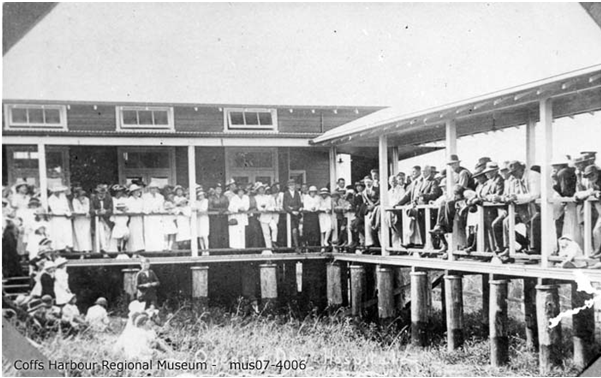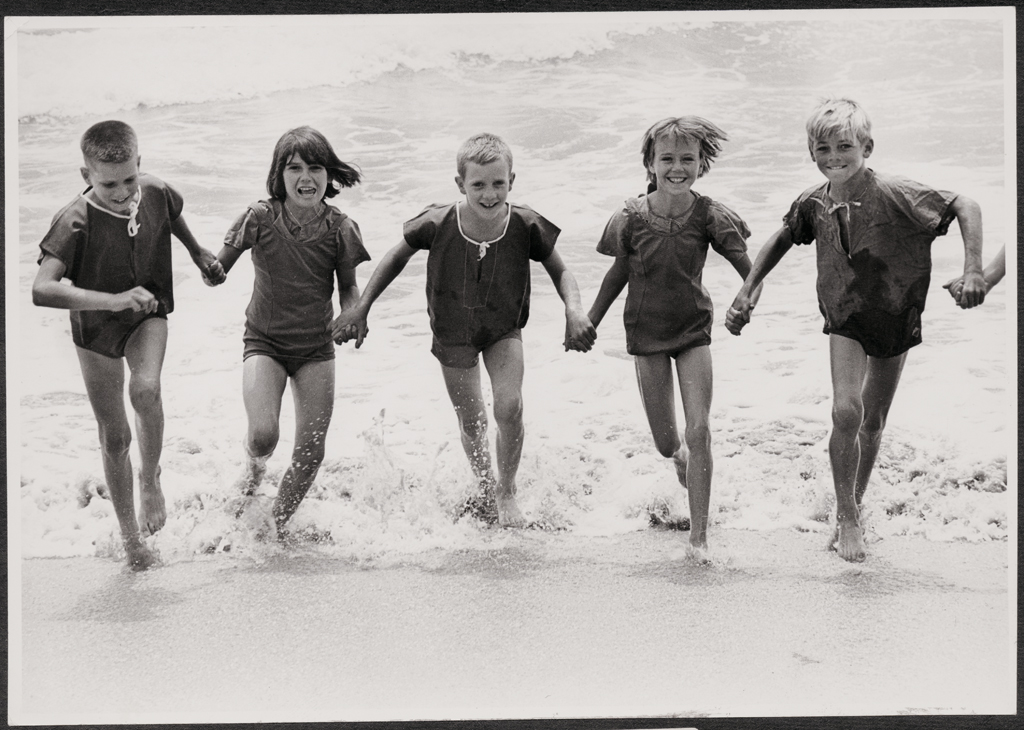 Opening of the Women’s ward at the Coffs Harbour Hospital, 1928
Opening of the Women’s ward at the Coffs Harbour Hospital, 1928
The Coffs Harbour Hospital was opened in 1917 after eight years of fundraising by the local community to provide the initial one thousand pounds as required by the government at the time. Once it was opened however there was ongoing struggles to fund the everyday running costs and despite various schemes the hospital was struggling to stay open by 1927.
On page 100 of Jean Donn-Patterson’s “Coffs Harbour 100 Years Down the Track” , believed to have been published in the 1980s, Jean states the following:
“In those early days it was rumoured that Sydney was quite impressed by our [Hospital’s] financial improvements and they sent representatives here to see how it worked. They were very impressed and so, they say, this was the beginning of our medical benefits. The old identities firmly believed this, and I feel it could be right too, but have found no evidence, so far, to support this claim.” [1]
Now through Trove, evidence for the old identities claim is available. The 17 June 1930 edition of the Coffs Harbour Advocate describes how the Coffs Harbour Hospital’s contribution scheme was being adopted around the State. [2]
FINANCING THE HOSPITAL – THE COFFS HARBOUR SCHEME
Occasionally, of course, one or two necessary amendments of figures have to be made.
George England’s history of Coffs Harbour Hospital, published in the Coffs Harbour Advocate in 1970, refers to this scheme as the “Jackson scheme”. [3] In 1927, Coffs Harbour Hospital was in danger of closing due to lack of funds. The Hospital committee (under President R. G. Jackson) decided to try the above-described scheme. It was a voluntary scheme, but there were “very few refusals” from the local residents. [4]
The scheme thus amounted to a universal contribution scheme, and by this means cracked the puzzle of how to fund the weekly running costs of a hospital.
To find out more details of this interesting story, please visit our Local Heritage page here for the full article.
References
- Donn-Patterson, Jean Coffs Harbour 100 Years Down the Track, page 100.
- Coffs Harbour Advocate, June 17 1930, page 1, retrieved from: http://nla.gov.au/nla.news-article185723244
- England, George A History of Coffs Harbour Hospital (Part 4), Coffs Harbour Advocate, February 25, 1970, page 4.
- Yeates, Neil (1990) Coffs Harbour Vol I ; pre-1880 to 1945, page 187.
(Research courtesy of Volunteer Geoff Watts)

The continuing struggles for adequate health care for regional patients also led to the development of the Royal Far West Children’s Health Scheme.
The 24th of March, 2019 marks the 70th anniversary of the Royal Far West Children’s Health Scheme in Coffs Harbour. Over the years, the members of the Coffs Harbour branch have raised funds and worked with health practitioners to benefit thousands of local children, as well as contributing to the charitable works of the organisation across New South Wales.
As an integral part of the provision of health care in Coffs Harbour, the history of Royal Far West highlights how members of our community have rallied together, often in the face of isolation, financial scarcity and official indifference, to address the health needs of the Coffs Coast region.
The current exhibition on display at the museum until 11 May 2019 celebrates Royal Far West’s work in our community over the past 70 years, honouring the energy and commitment of its members and volunteers.
